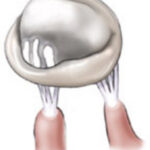Uterine Prolapse
If you have a prolapsed uterus, you are probably now a postmenopausal woman who has delivered at least one child vaginally. During pregnancy and childbirth, damage to the supportive muscles and ligaments is caused by repeated strain over the years. As a result the pelvic floor weakens and causes the uterus to prolapse later in life.
Signs and symptoms
The signs and symptoms of uterine prolapse vary from woman to woman. She could have no symptoms at all, or she could have moderate to severe symptoms. She might have a prolapsed uterus if she experiences:
•
A pulling sensation in the pelvis
•
A heavy feeling in the pelvic area
•
Feeling an object in the vagina while sitting
•
Pain during sexual intercourse
•
Low back pain that won’t go away
•
Uterus protruding from the vagina.
The causes of uterine prolapse is attributed to trauma incurred though pregnancy and childbirth. As the level of estrogen decreases with age, there seems to be a lack of muscle tone in the pelvic area. Women at risk of uterine prolapse are those that have one or more vaginal deliveries, and those that have given birth to extremely large babies. Chronic coughing is also a factor, as well as heavy lifting.
Diagnosis
If you have experienced any of the symptoms mentioned above you should see your doctor for an examination. Your doctor will perform a pelvic exam and check for signs of a uterine prolapse. You may be checked while lying and while standing. An ultrasound and MRI may be done to confirm the diagnosis.
Treatment
You may be asked to make lifestyle changes. If you are overweight, you may be asked to lose weight and do special exercises, called Kegal exercises, especially to target the muscles of the pelvic floor. You may also be asked to wear a pessary, which is a device that is inserted into the vagina to help support the pelvic floor. You will have to remove it every couple of days to wash it with warm soapy water and then reinsert it. The pessary may not work well in a more severe prolapse, and it may also interfere with sexual intercourse.
Surgery may be indicated if the lifestyle changes and the pessary improve the symptoms. The surgery is designed to repair the pelvic floor, and in some cases the doctor may decide it is necessary to remove the uterus.
Prevention
Preventing a prolapse may not be possible; however you may be able to decrease the risk of your developing a prolapse in later life. Maintaining a healthy lifestyle, with a healthy weight is key to preventing this from happening to you. After you have a baby and during pregnancy you doctor may ask you to incorporate Kegal exercises into your regular exercise routine. To perform Kegal exercises you squeeze and relax the muscles of your pelvic floor. And if you smoke, you should stop. The chronic cough associated with smoking causes pressure on the pelvic floor. You should be proactive in doing what you can to prevent this from happening to you.
For more information on uterine prolapse, see the Women’s Health Page at mayoclinic.com.
http://www.mayoclinc.com/health.uterine-prolaplse/DS00700/DSECTION-9






